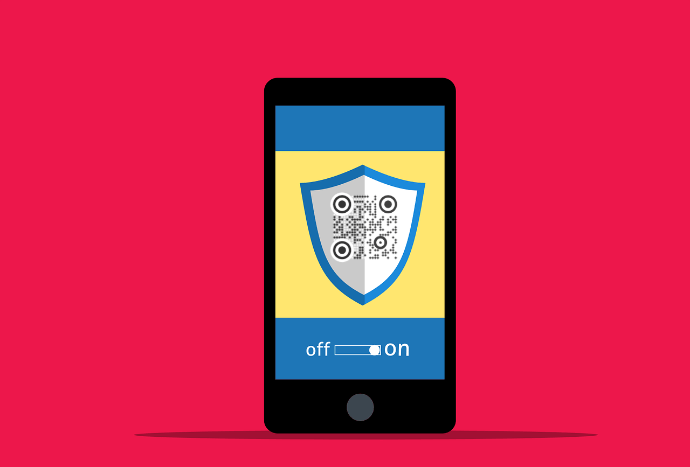From academic certificates to products and services, counterfeiting has become a worrisome issue across industries. And with advancements in software such as Photoshop, forgery has become only easier.
This can mean loss of revenue and security risks for the concerned stakeholders. So the question is—how do we stop this? Well, one of the most convenient and effective ways is via QR Codes.
These square-shaped barcodes are ubiquitous today. And you might have seen them at the check-out counter in grocery stores for payments or on print media creatives.
These QR Codes can be used extensively in authentication services as well. Wondering—how?
Keep reading to know.
A.How can QR Codes be used in the authentication
Here are some ways you can use QR Codes to prevent forgery:
1. Certificate authentication
You would have come across certificates (academic degrees or even licenses) getting duplicated. And it is very hard for a layman to understand the difference between an authentic certificate and a forged copy.
But QR Codes are up for the game. How? If you issue certificates to your students, customers, or other concerned stakeholders, you can add a QR Code to them. This QR Code can link to all the details on the certificate on your own website or database.
When the end-user scans the QR Code, he will be able to see all the details on the web link. And since the details will be hosted on your information system, it will not be possible for one to duplicate the certificate. Exciting, right?
2. Confidential document sharing
It is common in business to have confidential documents. And in such cases, you’d want only authorized personnel to be able to access them.
Here, a password-protected QR Code can help you out. It helps you share the content encoded in QR Codes (text, document, or even a website URL) with only the people you want.
You can enter a password while creating the QR Code and share it with the required personnel. When they scan the QR Code, they’ll be prompted to enter the password. Only once they do it, they’ll be able to see the encoded content.
3. Product verification
The fake copies of products are a common issue across industries. From pharmaceuticals to apparel, it concerns everyone. It can not only result in loss of revenue but also put your brand image at risk.
In such cases, QR Code gets you covered. Just like certificates, you can add a QR Code to the product packagings. When customers scan this QR Code, they’ll be able to verify the authenticity of the product and differentiate it from a fake copy easily.
4. Vehicular authentication
With increasing traffic on roads, quick and reliable vehicular verification has become a challenge for city admins.
And many of them are using QR Codes to do the same already. Here, a QR Code is placed on the vehicle which can then be scanned to verify its status. It is especially helpful in case of an accident or a theft. By using QR Codes in conjunction with asset tracking, city admins can quickly identify and diagnose vehicular problems, ensuring safer roads for all.
5. Laboratory reports
Laboratories issue health certificates all through the day. And amidst the pandemic, it has become important to verify the report’s authenticity to curb disease spread. QR Codes offer a seamless and effective way to do the job here.
Generate a QR Code For Your Unique Case
START TODAY!
6. Visitor management or employee verification
You probably have seen QR Codes on visitor passes and employee ID cards. They are used to help verify the authenticity of the personnel for entry into the premises.
Here’s a detailed guide on how it can be done. This guide is also available in Spanish.
To help you understand it better, here’s a quick video on it:
B. Popular Use-Cases of QR Codes for authentication services
There are a lot of organizations using QR Codes for authentication services already. Here are some of them:
1. CBD products
Various states across the world have made it mandatory to print QR Codes on CBD products for authentication purposes.
For example, Florida has mandated that all legal CBD products must be distributed and sold with a label. This label needs to have a barcode or a QR Code linking to the Certificate of Analysis (COA).

2. COVID-19 test report
Covid-19 has hit the world severely. And all the countries have taken stringent measures to fight against it.
For example, Dubai has made it mandatory for Dubai-bound passengers to produce their RT-PCR test reports with QR Codes printed on them. This enables the authorities to check the authenticity of the report
3. License certificates
The Singapore Food Agency uses a QR Code on the license certificate issued to every restaurant. As end-users scan it, it redirects them to the SFA website with license details.
Similarly, an Indian education startup, TutorCity, India, also adds QR Codes on its Certificates of Achievements.
4. Vehicular Verification
The General Directorate of Traffic, Spain has incorporated the use of QR Codes by launching a mobile application— mi DGT. It allows drivers to carry both their driving license and the rest of vehicle documents on their mobile. Hence, any traffic police personnel can scan it to verify driver details in real-time.
5. Headsets
Sennheiser, an audio company, has taken a step further to ensure customer satisfaction. How? By adding a QR Code on the product box. When scanned, it redirects the customer to the product verification portal. Here, customers can see whether the product is genuine or not. This promotes the brand’s image positively and builds customer trust.
C. How to create a QR Code
Now you’ve why it makes sense to use QR Code in authentication services. The next question—how to create one?
1. Decide on your QR Code category
Depending on what you want your end-users to see, you’ll have to choose an appropriate QR Code category.
For example, if you want to create one to allow authentication of your products, you need to select a Website URL QR Code. And if you want them to offer them the complete product information, you’d need to create a Product QR Code.
Once decided on the QR Code category, you need to select an appropriate QR Code generator. You can head on to any search engine and find the best one for your use case. To make it easier for you, here is a detailed comparison chart of the best QR Code generator available online. You can go through it to find the best one for your use case.
2. Create a QR Code
Using Scanova to demonstrate how to create a QR Code for authentication:
1.Go to Scanova and select the most relevant QR Code category

2. Add the content you want to encode in the QR Code and click Continue
3. Now you’ll be asked to name the QR Code. Once you’ve named it, click Create QR Code
4. On the page that loads, you’ll see the image of the QR Code. Alongside it, you’ll see the Edit Design button. If you click on it, you’ll see two design options—Custom Logo Design and Custom Background Design

Custom Logo Design: It allows you to add your business’s logo and color to it.
Custom Background Design: It helps you place your QR Code on any image.
5. Once you’ve decided on the design or no design, click Download. You’ll be prompted to sign-up for a 14-day free trial. Note that you won’t have to enter your card details to sign up
6. Once you’ve signed up, click on Download. You’ll then have to specify the QR Code image’s format and size

7. Once you’ve specified the details, click Export
That’s it. Your QR Code will be downloaded. It is always advisable to test scan the QR Code before putting them out.
Now you know everything you need to know about the QR Code in authentication services. You can create your own QR Code and offer a safe and secure verification process to your audience.
Generate a QR Code For Your Unique Case
START TODAY!
